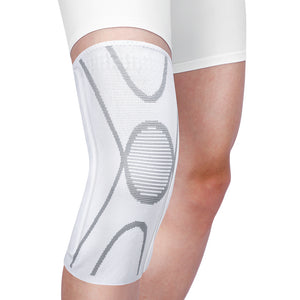How Long Do Back Spasms Last?

Back spasms are involuntary contractions or tightness of the muscles in the back. These can range from mildly uncomfortable to intensely painful, often causing significant disruption to daily activities. When these muscles suddenly tighten or contract, it can result in a sharp, painful twinge or a continuous aching sensation. While back spasms commonly occur in the lower back, they can affect any muscle in the back, causing significant discomfort and pain.
Back spasms can be triggered by various factors, including muscle strain from overuse or sudden movements, poor posture leading to prolonged muscle stress, and dehydration, which causes electrolyte imbalances. Additionally, stress and anxiety can also induce muscle tension, further contributing to spasms.
But how long do back spasms last?
The duration of back spasms varies based on the underlying causes. While back spasms are sometimes temporary, chronic back spasms (those recurring or persisting over long periods) often require more intensive management and treatment strategies. In such cases, using a back brace for muscle spasms can provide support and help alleviate discomfort by balancing the affected area and reducing muscle strain.

What Are the Types of Back Spasms?
Back spasms can generally be categorized into two types: acute and chronic. Each type has distinct characteristics and durations:
✧ Acute Back Spasms
An acute back spasm is a sudden, involuntary contraction or tightening of the back muscles. This type of spasm is typically short-term and often occurs as a result of a specific trigger, such as lifting a heavy object, making a sudden, awkward movement, or experiencing a minor injury.
The pain from an acute back spasm can be sharp and intense, causing significant discomfort and limiting mobility. These spasms are usually localized to a specific area of the back and can make it difficult to perform everyday activities.
Duration:
Acute back spasms typically last from a few days to a few weeks. They are often short-lived and can be managed with rest, ice or heat therapy, pain medications, and gentle stretching. Using a back brace for muscle spasms during the acute phase can help stabilize the back and alleviate pain by reducing muscle strain.
Symptoms:
- Sudden onset of sharp or stabbing pain.
- Muscle tightness or cramping in the back.
- Limited range of motion due to pain.
- Pain may be localized to a specific area or reach the adjacent muscles.
✧ Chronic Back Spasms
Chronic back spasms refer to the persistent and recurring tightening or contraction of back muscles. They are often linked to underlying health issues like arthritis, degenerative disc disease, or chronic muscle strain. These spasms typically produce a dull, aching pain that can vary in intensity and may spread to other areas, such as the hips or legs.
Chronic back spasms are often triggered by factors like poor posture, repetitive stress, or sustained physical activities.
Duration:
Chronic back spasms are persistent and recur over months or even years.
Besides physical therapy, regular muscle strengthening exercises, and medications, long-term use of a back brace for muscle spasms can help manage pain and provide support during daily activities. However, proper treatment is necessary to treat the underlying issues.
Symptoms:
- Persistent muscle tightness or cramping in the back.
- Dull, aching pain that can fluctuate in intensity.
- Frequent episodes of muscle spasms, sometimes without a clear trigger.
- Pain that can spread to other areas, such as the hips or legs.
- Possible underlying conditions like degenerative disc disease, arthritis, or chronic muscle strain.

Optimal Sleeping and Walking Posture for Painful Back Spasms
Managing back spasms effectively involves maintaining proper posture both while sleeping and walking, as these daily activities significantly impact back health.
- Sleeping Position
Sleeping on your back with a pillow under your knees. It will maintain the natural curve of your spine and distribute your weight evenly, reducing pressure on the back muscles. This position is particularly beneficial for alleviating back spasms at night. It promotes relaxation of the back muscles and minimizes strain on the spine. With this posture, you can enjoy a restful sleep while reducing discomfort.
- Use A Firm, High-Quality Mattress
A medium-firm mattress of high-quality material typically offers the best support by maintaining spinal alignment while providing enough cushion to be comfortable. Moreover, use a pillow that supports the neck and maintains the spine in a neutral position.
- Adopt A Proper Walking Posture
Using a back brace for muscle spasms can help keep your posture in check.
Treatments That Can Provide Relief from Back Spasms
A combination of treatments can be effective in relieving and recovering from back spasms. Here are some ways through which you can get rid of back spasms.
✦ Immediate Relief Measures
- Rest: Temporarily reducing physical activity helps prevent the worsening of spasms and allows the muscles to relax.
- Cold Therapy: Applying ice packs or cold compresses can help lessen inflammation, numb the area, and provide immediate pain relief.
- Heat Therapy: Using heat pads or warm baths can help relax muscles, increase blood flow, and alleviate stiffness and pain over time.
✦ Over-The-Counter Pain Medications
NSAIDS (Nonsteroidal anti-inflammatory drugs), such as ibuprofen or acetaminophen, effectively help reduce pain and inflammation associated with back spasms.
- Muscle Relaxants: Prescribed muscle relaxants can relieve muscle spasms and stiffness, promoting relaxation of the affected muscles.
- Physical Therapy: A structured physical therapy program can strengthen muscles, improve flexibility, and correct posture. This helps prevent future spasms and promotes overall spinal health.
- Posture Correction: Utilizing a back brace helps maintain proper spinal alignment and supports the back muscles, reducing strain and providing relief during daily activities. It can be particularly beneficial for individuals prone to recurrent spasms or those recovering from acute episodes.

The Importance of a Back Brace for Muscle Spasms
A back brace for muscle spasms plays a crucial role in providing support to the back muscles. They reduce muscle strain, help alleviate pain, and ensure a speedy recovery.
Fivali Lumbar Support FBR06, with its supportive, innovative design, can significantly reduce back pain, allowing you to enjoy all your daily activities with great enthusiasm!
It features adjustable tension and diamond-shaped breathable fabric, enhancing comfort and support. With extended shoulder padding and a professional design for pain relief, it offers adjustable shoulder support and is super comfortable to wear. Ideal for various activities like running, work, and gym sessions, the Fivali Lumbar Support ensures optimal support and relief for individuals dealing with back spasms.
Treat Your Muscle Spasms with Fivali!
Each Fivali back brace for muscle spasms offers a perfect blend of comfort and support, designed to alleviate back pain and effortlessly enhance your daily activities. With a breathable fabric and ergonomic shoulder padding, these braces ensure optimal relief and stability whether you are working, running, or hitting the gym. Discover how Fivali back braces can transform your comfort and mobility—invest in your well-being today!
-
Posted in
Back pain causes, Back pain solutions, Brace, Pain, Recovery













